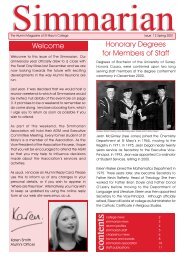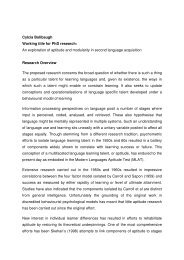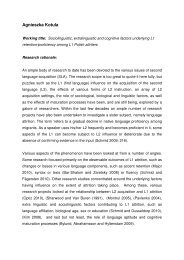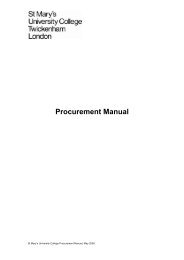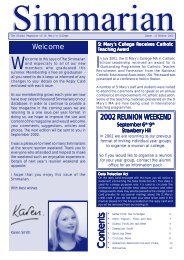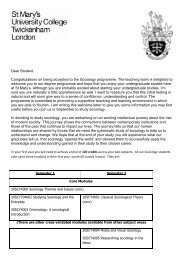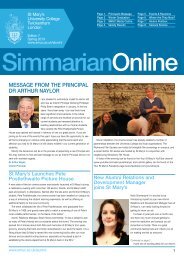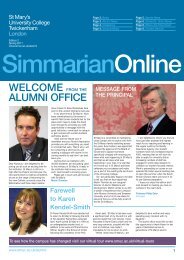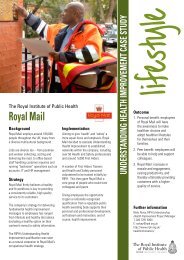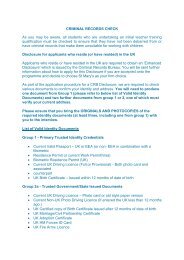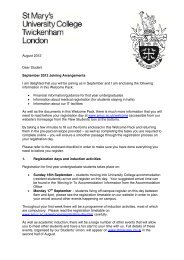letter - St Mary's University College
letter - St Mary's University College
letter - St Mary's University College
Create successful ePaper yourself
Turn your PDF publications into a flip-book with our unique Google optimized e-Paper software.
SECTION 2<br />
OVERVIEW OF THE PROGRAMME STRUCTURE<br />
What is an undergraduate degree?<br />
As you will have gathered from the prospectus, an undergraduate degree is normally<br />
studied full time over 3 years; however this time will be longer if you are studying part<br />
time. The first year of your degree does not count towards your final degree<br />
classification, although you need to pass all the modules you take to obtain your<br />
degree. The first year is used to provide the foundation for your further study and to<br />
help you to produce degree standard work. Experience shows that those students<br />
who perform best in this year generally go on to attain higher degree classifications<br />
than students who perform less well. From the second year onwards your academic<br />
achievement, i.e. the marks that you achieve, contribute towards the classification of<br />
degree you will be awarded at the end of your studies.<br />
What are Credits/Modules?<br />
At <strong>St</strong> Mary’s <strong>University</strong> <strong>College</strong> our programmes comprise of a series of modules,<br />
usually worth 20 credits. Each year you will need to accumulate 120 credits (pass 6<br />
modules), giving you a total of 360 credits to achieve your degree. Some modules<br />
are worth 40 credits, including your final year dissertation/research module. Each 20<br />
credit module equates to approximately 200 hours of learning, some of this time will<br />
be in classes with staff and other students but additionally you are required to<br />
complete further student-led study, this may include reading, preparation for class<br />
sessions, research etc<br />
What is a degree classification?<br />
When you graduate your degree will be classified you will either attain a first-class<br />
degree classification (average of 70% & over), upper-second class (average between<br />
60-69%), lower-second class (average between 50-59%) or third class degree<br />
(average between 40-49%). This classification is based on your performance at<br />
levels 5 and 6 (your second and third year)<br />
What are joint and single honours degrees?<br />
Here at <strong>St</strong>. Mary’s we offer joint and single honours degrees. Single honours<br />
students in nutrition will take all 360 credits in nutrition related modules. This single<br />
honours pathway is accredited by the Association for Nutrition and entitles graduates<br />
to direct entry to the professional register of nutritionists.<br />
Some students prefer to combine subjects and study a proportion of their modules in<br />
each of two disciplines e.g. you may have decided to combine studies in nutrition with<br />
studies in sports science, health, exercise and physical activity or psychology.<br />
It is possible to transfer from single honours to joint honours and vice versa,<br />
but these transfers MUST occur within the first 2 weeks of your studies so if<br />
NU <strong>St</strong>udent Welcome Pack 2013 5 01/08/2013



